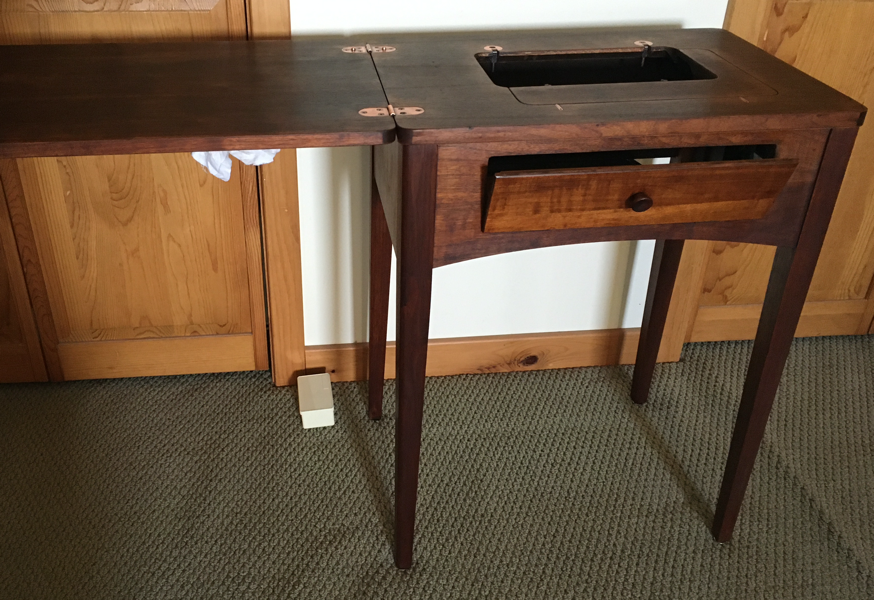
What do you do when your partner picks up a beautiful, top-condition sewing machine in a cabinet for you at the local transfer station? Of course you get the machine a tune-up from the local expert. But what about the cabinet and all that flaking varnish?
After giving serious consideration to outsourcing, I decided to try refinishing this sewing table myself. Watching videos on the Dashner Design & Restoration channel gave me some valuable ideas and tips for tackling the project.
Although this was a messy, smelly, and time-consuming process, I’m glad I decided to take it on, if only for the confidence boost for DIY in general. I wouldn’t recommend this type of project for everyone; you really need a patio, paved driveway, or garage to work in, as well as all the proper safety gear.

However if you do have a small refinishing project on an item that isn’t a valuable antique but rather a functional piece that you want to put back into service, home-refinishing can be a rewarding and cost-effective (if also time-consuming) approach.
Depending on the type of refinishing project you’re taking on and the condition of the piece of furniture, you may need other items in addition to the materials list below. Consult with a professional furniture repair shop if you have any questions.
Materials
- Paint or varnish stripper
- Brush
- Scraper blade or flexible putty knife
- Disposable container
- Steel wool
- Mineral spirits
- Disposable rags or old cotton clothing
- Fine-grit sandpaper (I used 220)
- Wood glue and syringe
- Clamps and/or painter’s tape
- Risers or work bench with padded surface for elevating the piece to a comfortable height
- Cardboard (for protecting the top of the piece if you have to flip it over)
- New finish – I used Danish Oil with a walnut tint

Safety equipment
- Ventilator mask rated for high-VOC chemicals
- Goggles or protective glasses
- Rubber or vinyl gloves
